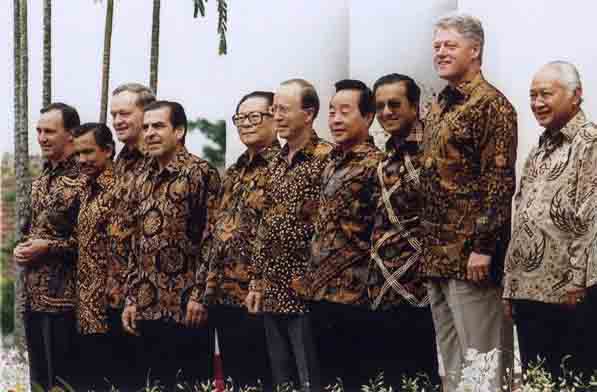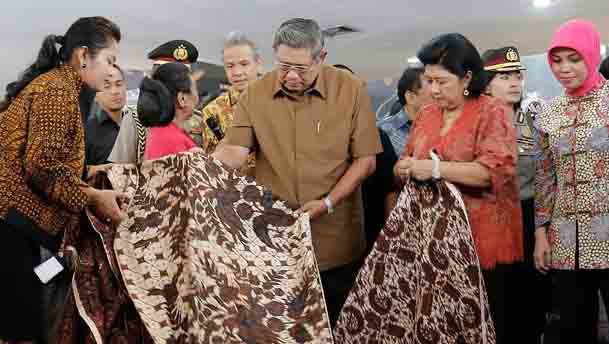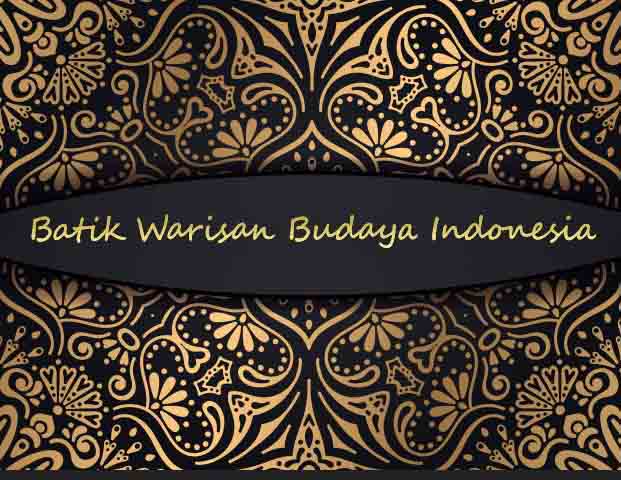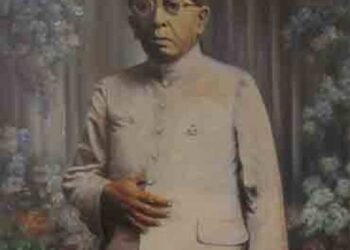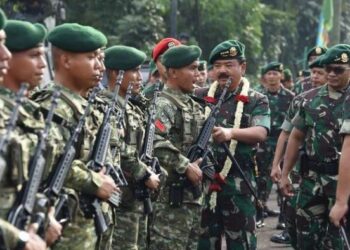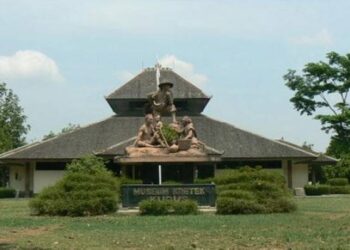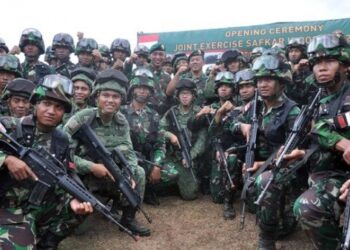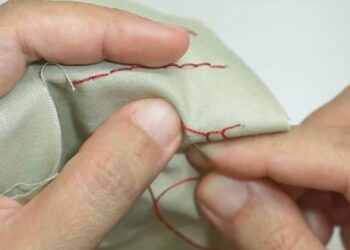Starting from the first President of the Republic of Indonesia, Ir. Soekarno had started his efforts in the search for the identity of the Indonesian nation with his expression, “The soul of a nation that lives, never stops running, art that lives never stops.” To support this, Bung Karno initiated the Trisakti concept is up to date until now. consisting of;
- Sovereign in politics,
- Independent in economy,
- Personality in culture.
Sovereignty in politics means that this nation has full sovereignty so that it is not dictated by foreigners in determining its future. Being independent in the economy means that this nation must have strength and independence in the economy, not dependent on foreign aid and debt. Having a personality in culture means that this nation must have strong cultural roots as a basis for personality characteristics so that it has a strong Indonesian-style personality even though it is flooded with foreign cultures so that it is not easily uprooted from its roots. Cultural roots that are based on diversity are the identities of the Indonesian people.
Efforts to create awareness of batik art as a national identity were continued by the second president of the Republic of Indonesia, Mr. Soeharto. He saw a golden opportunity for the art of batik to be recognized by the world by introducing it through an important event, namely the Asia Pacific Economic Conference (APEC) at the Bogor Palace in 1994. At that time, all national leaders who attended the APEC conference were sovereign to wear batik clothes. This rare event is certainly in the spotlight of the world media because eighteen leaders from various countries such as President Bill Clinton from the United States, the Prime Minister of Canada, Japan, and several other state leaders took a photo together wearing a batik shirt designed by the famous designer, Iwan Tirta.
As for the sixth President of the Unitary State of the Republic of Indonesia, Susilo Bambang Yudhoyono has made a timeless history, namely the effort to propose batik as Indonesia’s cultural heritage was welcomed by UNESCO. 2 October 2009, marked a milestone in the recognition of batik as an intangible world cultural heritage from the Indonesian state.
Meanwhile, the seventh President of the Republic of Indonesia, Joko Widodo also showed concern for the heritage of batik art. He set a brown batik dress code during the ministerial inauguration ceremony in the Working Cabinet. Support for batik as the cultural identity of the Indonesian nation continues to flow until now. The government through the Ministry of Industry has supported the sustainability of the batik industry and mapped many batik craftsmen by providing Batikmark as an effort to protect batik motifs from piracy. Batikmark also showed that the batik was of good quality. A total of 106 batik craftsmen from 50 thousand craftsmen throughout Indonesia have been certified and tested quality batik. Batikmark is a sign that shows the identity or characteristics of batik made in Indonesia. There are three types of classification in batik mark 1. The gold category is for hand-written batik, silver for mixed batik and stamped batik, and white for printed batik. Batikmark came into effect in Indonesia people since 2007 and is an initiation of the Indonesian Chamber of Commerce, the Indonesian Batik Foundation, the Ministry of Tourism, and the Ministry of Industry. The main objective of Batikmark is to face competition and piracy, especially in the era of advanced technology in globalization.
In connection with the study of this article, the influence of globalization is focused on cultural aspects, especially batik, which is the cultural identity of the Indonesian nation. Yamashita (2003: 4) in his book discusses the ongoing cultural process and its relationship with economic and political globalization. In Southeast Asia, national, ethnic, and sub-regional communities contribute as agents of cultural production. However, they are not the same entity as before, but different communities because they have “mixed” with foreign things that infiltrate so that the homogeneity of culture is questioned. There is no more uniqueness and uniqueness of culture after globalization entered. The cultural identity of a community begins to fade slowly but surely. This contestation of cultural identity is challenged because it is constantly in contact with international efforts, social class, gender, and others so that local entities try to redefine cultural identities that have given birth to new cultures.
The fast era of globalization, which has brought about capitalism, has easily entered Indonesia. This certainly has a lot of impact on the life of society and the state. The Indonesian nation has experienced three major crises, namely,
- Sovereignty crisis because this nation is dictated by foreign powers and powers,
- The economic crisis due to the hegemony of capitalism,
- Cultural crisis because this nation is increasingly uprooted from its cultural roots due to the mass culture pumped by global capitalism.
According to Tilaar (1999) man as a social being and a cultural creature is someone who controls and behaves by cultural values, especially ethical and moral values that live in that culture.
The ethical and moral values contained in the art of batik are a manifestation of social solidarity which is bound by the rules and cultural values adhered to by society. However, along with the entry of the spirit of capitalism that offers economic competition, the cultural values embodied in the art of batik experience a shift and tend to narrow which leads to privatization. Batik art, which was originally a reflection of communal solidarity, turned into a persona when pressed by the banners of capitalism carried by the global market. Then began to emerge individualism rooted in the spirit of capitalism in creating art. Fuad Hasan called it “violence and not wealth.” Togetherness and solidarity have changed into self. This has resulted in the community’s traditional arts and culture starting to fade, including cultural values and philosophical meanings.
This rapid change is explained by Delor’s Report which addresses global issues, namely the tension between tradition and modernity, global versus local, universal and individual, permanence, and renewal. Cultural conditions due to the convergence of two values as a result of worldliness in all fields, which at its top creates tension between the spiritual and the material. The influence of globalization has shifted the value of art, especially batik, from philosophical, religious, and symbolic art to art that is purely material. Artwork like this was created out of practical and economic necessity.
The power of capitalism in the era of globalization cannot be avoided, so this power must be taken with a wise attitude. Various efforts are continuously being made to “welcome” globalization as well as formulate strategies so that this nation is not carried away by mere global currents that can erode our culture. The Indonesian nation must show its existence by showing the characteristics it has. This distinctive feature makes the Indonesian nation unique as well as a marker of its existence. The markers were chosen among the diversity fall on the masterpiece of batik art.
Various activities related to the art of batik are aimed at socializing batik to the public. Socialization is the process of transferring ideas, knowledge, attitudes, and behavior from one generation to the next. This process takes place starting from family, friends, formal and non-formal education, and associations in the community. Socialization is a term often used by sociologists, while anthropologists use the term enculturation which refers to the same process. Meanwhile, internalization is the inspiration for the process to form knowledge and behavior. Internalization includes the process of appreciation, the process of mastery in depth through training, processing, thinking, and certain other presentations. Therefore Koentjaraningrat (1986) states that the internalization process is personal. The culmination of this process which is focused on each person is what all components of society and the government strive to create in arousing individual awareness or awareness of the existence of batik as their cultural identity. Quoting the words of Ingkang Sinuwun Kanjeng Susuhunan Pakoe Boewono X from the Surakarta Palace, “Rum Kuncaraning Bangsa Dumunung Haneng Luhuring Budaya” which means the fragrance of a name and the high degree of a nation lies in its culture.
BIBLIOGRAPHY
Biomantara, Rai; Martini Dewi. 2014—Analisis Skala Ekonomis Pada Industri Kain Batik di Kota Denpasar.“ E-Jurnal Ekonomi Pembangunan Universitas Udayana Vol.3, No. 11,November 2014.
Chandler, Michael J. 2014. —On being Indegenous: An Essay on the Hermeneutics of ”CulturalIdentity.“ Human Development. Switzerland. Vol. 56, No.2, pp83-97
Creswell, John W, 2007. Qualitative Inquiry and Research Design Choosing : Among Five Approaches. Second Edition. Thousand Oaks. London. New Delhi: Sage Publications, Inc.
Hardjonagoro KRTH. 1999. Motifs and Meanings in Batik: Spirit of Indonesia. Judi Achjadi Ed. Jawa Barat. Yayasan Batik Indonesia
Haryanto, Jony Oktavian; Priyanto,Sony Heru. 2014. —Recent Future Research in Consumer Behavior: A Better Understanding of Batik as Indonesian Heritage. Proquest Research Library.Researchers World Vol 4 Ed. 410 April 2014.
Lindholm, Charles. 2007. Culture and Identity: The history, Theory, and Practice of Psychological Anthroplogy. Oneworld Publications. Oxford-England.
Moersid, Ananda Feria. 2013. “Re-invasi Batik dan Identitas Indonesia di Arena Pasar Global“ WIDYA.Volume 1 Nomor 2. Juli-Agustus 2013.
Nurainun, Heriyana; Rasyimah. 2008. Analisis Industri Batik di Indonesia.Fokus Ekonomi, Desember 2008, Vol 7. No.3.
Oparinde, Suleiman Sunkanmi. 2012. Batik as a Cultural Identity of the Yoruba : Hand Colouring Techniques and Applications Possibility of Adaptations. Journal of Arts, Science and Commerce Vol III Issue 2 (3) April2013.
Ritchie, Jane and Jane Lewis. 2003. Qualitative Research Practice: A Guide for Social Science Student and Researchers. London.Thousand Oaks. New Delhi. Sage Publications Ltd.
Shepard, B and Hayduk, R. 2002. From ACT Up to WTO : Urban Protestand Community Building in theEra of Globalization. London:Verso. England.
Sularso, 2009. 60 Tahun Gabungan Koperasi Batik Indonesia. Koperasi Pusat Gabungan Koperasi Batik Indonesia. Jakarta.
Sutrisno. 2012. Tinjauan Sosial Terhadap Berkurangnya Tenaga Pembatik Pada Industri Batik.—Journal of Economi Education 1(1) 2012.
Suseno, Franz Magnis. 1985. Etika Jawa. Gramedia. Jakarta.
Van Roojen, Pepin. 2001. Batik Design. Singapore: The Pepin Press.
Voicu, Christina Georgiana. 2013.”Cultural Identity and Diaspora“ Philobiblon. Vol. 18, No. 1, pp.161-174
Widagdo. 2001. Pendidikan Tinggi Seni Rupa Dalam Wacana Global. Makalah. Bandung ITB.


